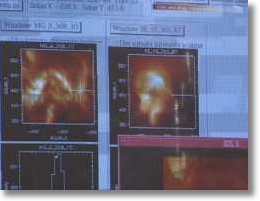|
L y n d s a y F l e t c h e r Solar Physicist Lockheed Martin Solar and Astrophysics Laboratory, Palo Alto, California
After four years I got my degree and decided to stay for a Ph.D. A Ph.D. is really a
rite of passage for professional scientists. This is where I moved into solar physics,
because I had really enjoyed plasma physics and astrophysics, and I liked the idea of
studying a star that was close enough that you had some chance of seeing what was going
on. After three and a half years, during which time I was mostly convinced I would never
make it, I got my Ph.D. I then left my home country and worked in Holland for five years,
for the University of Utrecht and for the European Space Agency. Last year I crossed the
Atlantic and started working here in Lockheed Martin.
What I do day-to-day
Most of the day I sit in front of a computer. I use it for just about everything from
writing computer programs to work out mathematical models, to copying data across the
Internet from a database in England. Right now I have two or three different science
projects on the boil, all of which are quite different in the kind of physics they use:
there are a lot of different sub-disciplines in solar physics. So if I get fed-up with
one, or it's just not working, I can put it aside for a couple of days. One project is to
use spectrometer data to calculate temperatures and densities and element abundances in a
hot, magnetically active region in the corona. Another is to model theoretically what
fast electrons do in a solar flare, and what their X-ray emission looks like.
|
